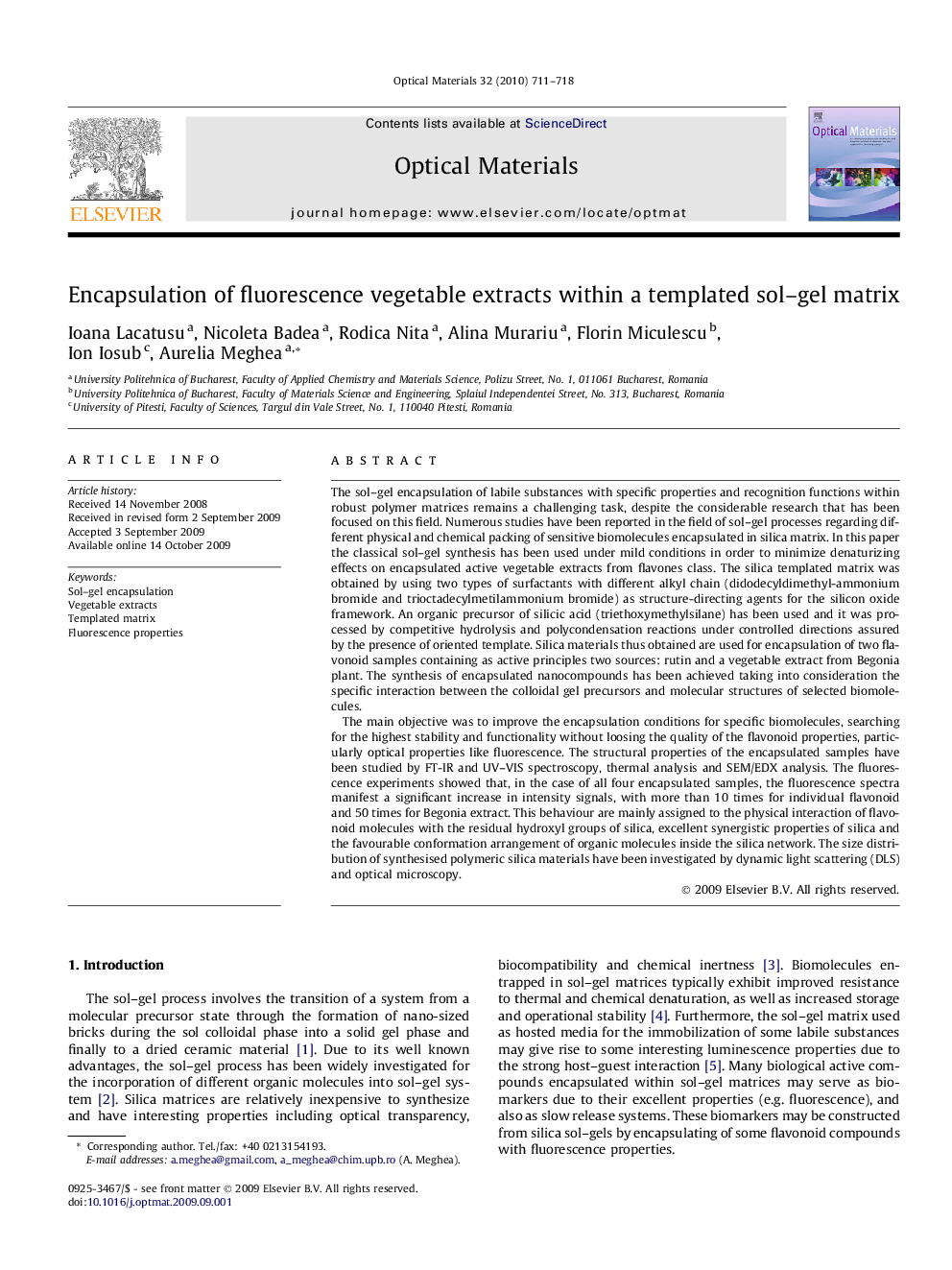| کد مقاله | کد نشریه | سال انتشار | مقاله انگلیسی | نسخه تمام متن |
|---|---|---|---|---|
| 1496475 | 992965 | 2010 | 8 صفحه PDF | دانلود رایگان |

The sol–gel encapsulation of labile substances with specific properties and recognition functions within robust polymer matrices remains a challenging task, despite the considerable research that has been focused on this field. Numerous studies have been reported in the field of sol–gel processes regarding different physical and chemical packing of sensitive biomolecules encapsulated in silica matrix. In this paper the classical sol–gel synthesis has been used under mild conditions in order to minimize denaturizing effects on encapsulated active vegetable extracts from flavones class. The silica templated matrix was obtained by using two types of surfactants with different alkyl chain (didodecyldimethyl-ammonium bromide and trioctadecylmetilammonium bromide) as structure-directing agents for the silicon oxide framework. An organic precursor of silicic acid (triethoxymethylsilane) has been used and it was processed by competitive hydrolysis and polycondensation reactions under controlled directions assured by the presence of oriented template. Silica materials thus obtained are used for encapsulation of two flavonoid samples containing as active principles two sources: rutin and a vegetable extract from Begonia plant. The synthesis of encapsulated nanocompounds has been achieved taking into consideration the specific interaction between the colloidal gel precursors and molecular structures of selected biomolecules.The main objective was to improve the encapsulation conditions for specific biomolecules, searching for the highest stability and functionality without loosing the quality of the flavonoid properties, particularly optical properties like fluorescence. The structural properties of the encapsulated samples have been studied by FT-IR and UV–VIS spectroscopy, thermal analysis and SEM/EDX analysis. The fluorescence experiments showed that, in the case of all four encapsulated samples, the fluorescence spectra manifest a significant increase in intensity signals, with more than 10 times for individual flavonoid and 50 times for Begonia extract. This behaviour are mainly assigned to the physical interaction of flavonoid molecules with the residual hydroxyl groups of silica, excellent synergistic properties of silica and the favourable conformation arrangement of organic molecules inside the silica network. The size distribution of synthesised polymeric silica materials have been investigated by dynamic light scattering (DLS) and optical microscopy.
Journal: Optical Materials - Volume 32, Issue 6, April 2010, Pages 711–718